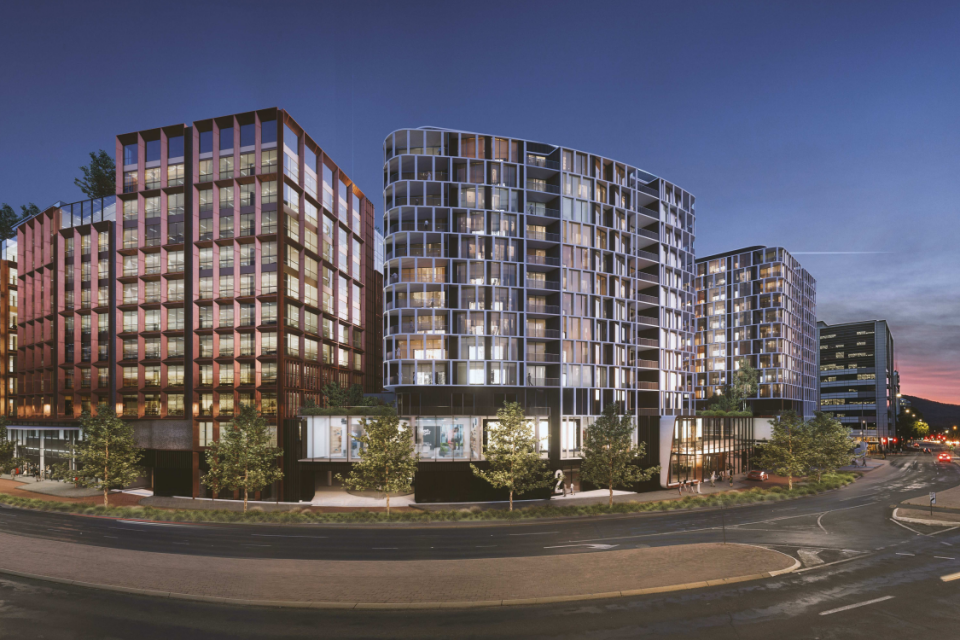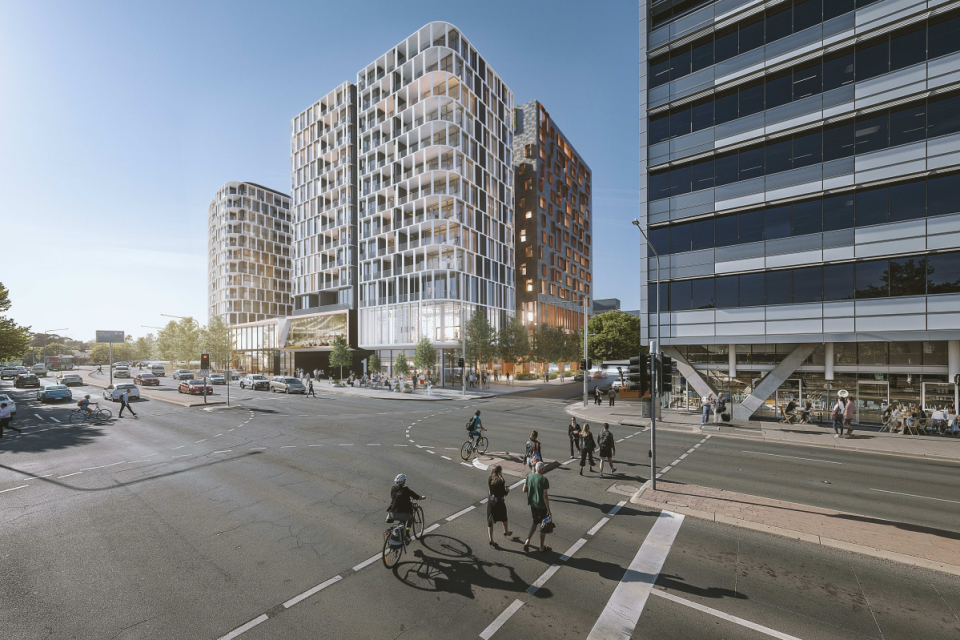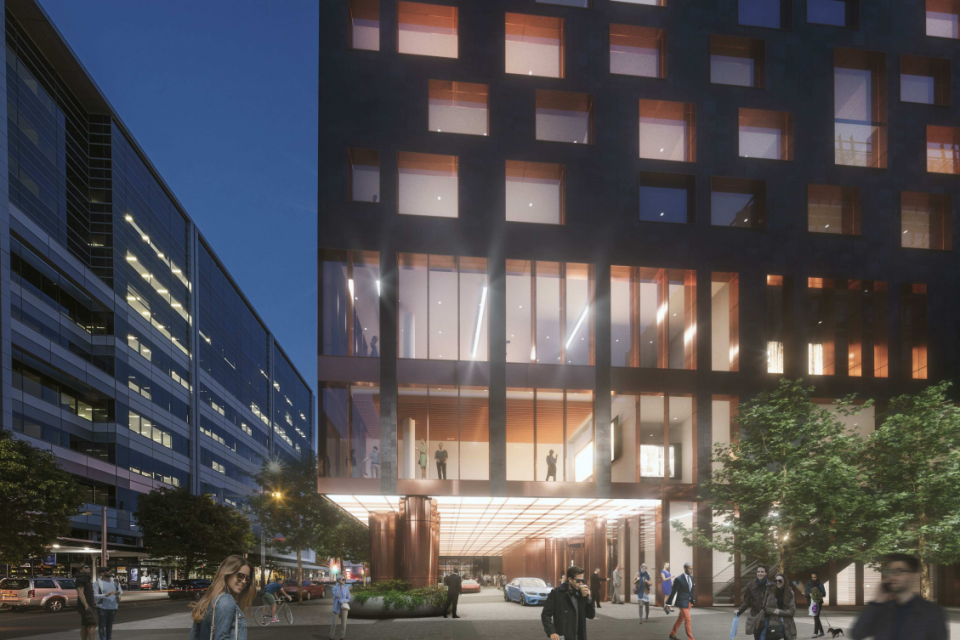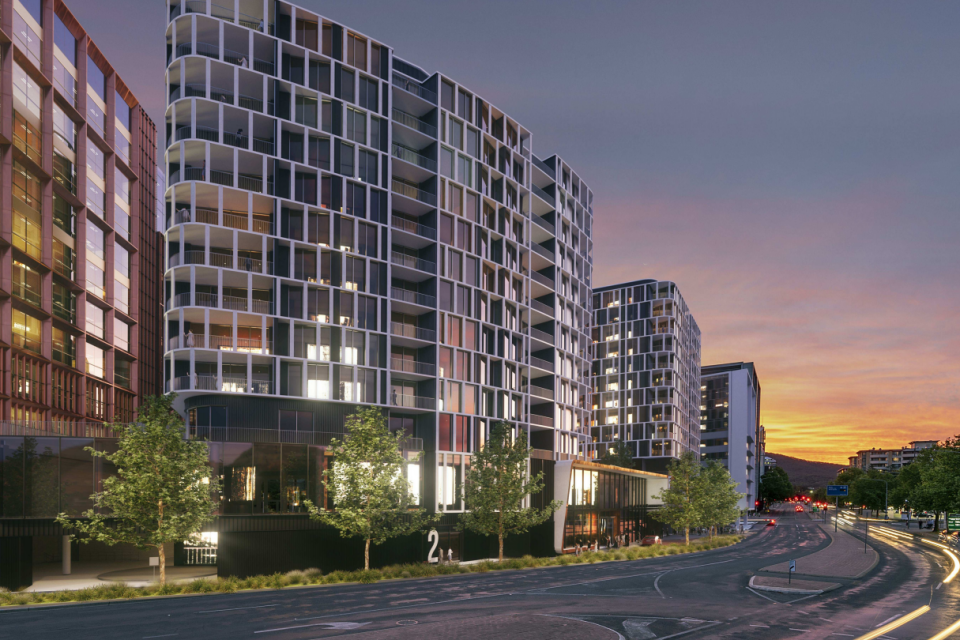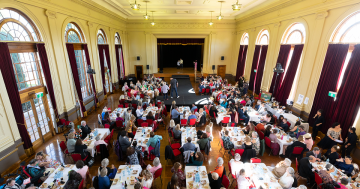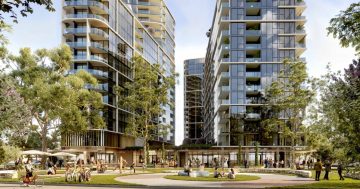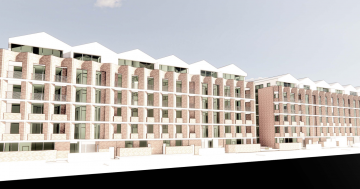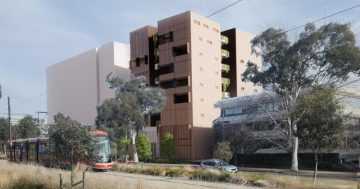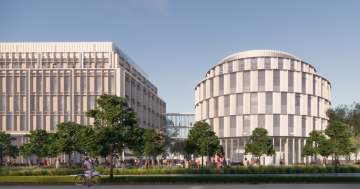
The covered piazza will be a focal point. Images: Buchan.
Queensland Investment Corporation has hit back at a National Capital Design Review Panel demolition of its revised plans for the landmark development of Section 96 in the city.
QIC, the owner of the Canberra Centre next door, has submitted its amended development application, a scaled-back revision of an already approved 2017 DA that it says proposes more attractive facades, greater pedestrian access and amenity, including a new piazza, and more landscaping.
But the Panel, in a lengthy critique, says QIC has not gone far enough, saying the proposal turns its back on the emerging precinct of Braddon, presents an impermeable street wall to Cooyong Street and lacks clear pedestrian connections and permeability.
The Panel also questions the proposal’s scale, solar access, sustainability values and traffic management, including the Cooyong Street slip lane in front of the main office building, basement car park access and the location of the new loading dock.
It also queries the location of the piazza location, which is designed to be a focal point.
The Panel believes QIC should look to the Section 84 Master Plan for guidance but says the building designs provide ”a good basis for further development”.
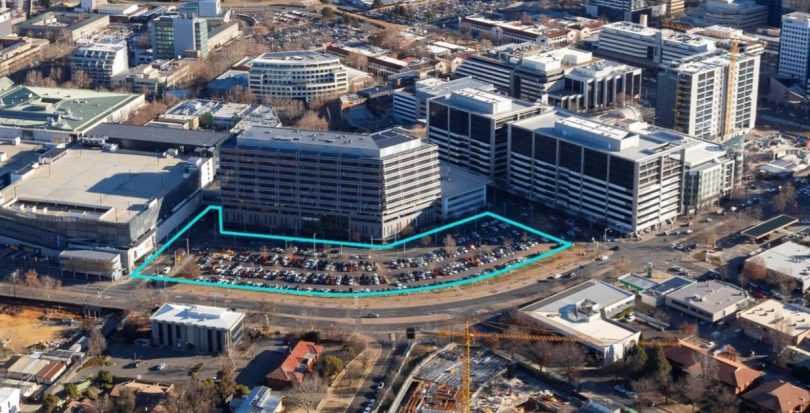
The site is currently a car park.
QIC accuses the Panel of over-reach, stressing that the proposal is an amended DA not a new application and should be treated as such.
QIC says the Panel should have focused on the changes to the approved 2017 design that incorporates improved pedestrian amenity, more efficient traffic circulation, and a reduction in total gross floor area and less on-site parking.
It also says the Section 84 Master Plan has been superseded as a set of planning guidelines for Section 96, confirmed by planning approvals for the site in 2011 and again in 2017.
”NCDRP’s assessment has gone well beyond the intent of the ACTPLA requested design review and unreasonably and inappropriately chose to go back to first principles and treat the review as an assessment of a completely new DA,” it says.
”The Panel has not given due consideration to past approvals or acknowledged the rationale for the current design which substantially improves on the approved 2017 DA.
”Moreover, there was no apparent recognition given by the Panel to the importance of the proposed development as a major contributor to the revitalisation of the City Centre and support for wider strategic government policy for city development, investment and job creation.”
QIC’s amended development application for the project on Section 96 – bounded by Cooyong Street, Genge Street, Narellan Street and Scotts Crossing – will now have much less retail space, and residential accommodation will be limited to serviced apartments and hotel rooms.
The development is still worth nearly $200 million and will cover the 10,000 square metre site, including five towers on a two-level podium.
But it will no longer have 250 residential units. They’ve been replaced with more hotel space (200 rooms) and 120 serviced apartments. Retail space has been slashed from 13,863 square metres to just 5,450 square metres while office space will increase slightly from 41,689 square metres to 43,650 square metres.
The total floor area and scale of proposed is about 77,000 square metres, about 13 per cent less than the 2017 plans.
The fresh plans maintain all key elements of the current 2017 above-ground DA but the façades will be made more interesting, with buildings separated on all streets, while on the ground there will be a greater focus on pedestrian amenity, with greater landscaping and new pedestrian-only precincts.
Building heights will stay at the maximum RL617 level (about 50 metres) but the Narellan Street office building facade is set back at the upper levels with an atrium to allow more natural light.
The project will have more active street frontages with retail and 24/7 pedestrian access and the new piazza with a high-level translucent roof.
”Combined with new pedestrian spaces in Narellan Street and Scotts Crossing, this piazza will ultimately support a new ‘food street’ through Section 84 (subject to a separate DA) adding further pedestrian connectivity to Bunda Street,” the DA says.
Above ground, there will be offices and landscaped terraces, or the hotel and serviced apartments with landscaped terraces and balconies.
A separate DA has been lodged for the three-level basement car park of 713 spaces, reduced from the original five levels.
The Cooyong Street slip road has been retained, and a new vehicle ramp access/egress from Scotts Crossing to existing basement parking under S84 and S97 will replace the existing access/egress ramp to Section 84 basement off Narellan Street.
New traffic lights will be installed at the Cooyong/Torrens Street intersection to improve traffic movement and pedestrian safety, while Narellan Street and Scotts Crossing will be retained to help create the new pedestrian areas.
The NCDRP, under the supervision of the ACT Government Architect and the NCA’s Chief Planner, provides design advice to decision-makers, developers and their design teams.



